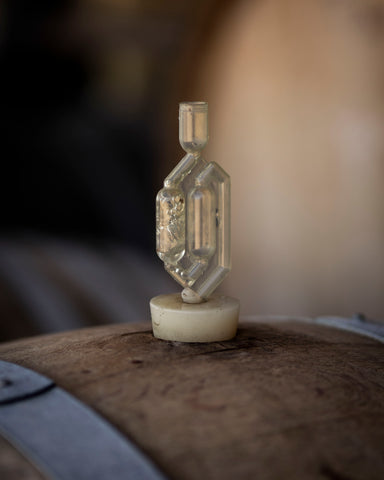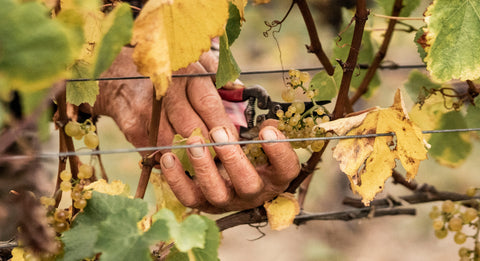
Wine can be like a form of art, creating a sensory experience that is greater than the sum of its parts. It can be an emotional experience. Other forms of art like music, painting, sculpture, are produced by a person, the art that is wine is a pure expression of nature, Mother Nature expressing herself through the manipulations of a winemaker and the best wines are those that most purely and transparently express the natural personality of its origins, that sense of place.
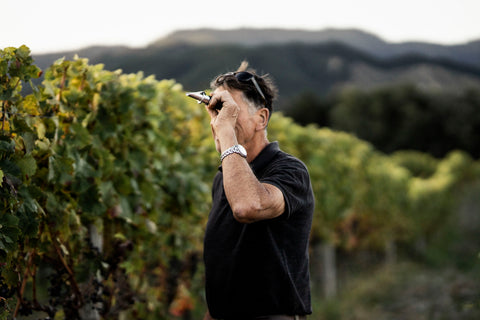
Our job is to harness this natural expression and to get it into bottle without interfering too much. If a winemaker manipulates the wine too much with adjustments and additions, like flavoured yeast, bacteria, acid, enzymes, sugar, tannins, sulphur, too much oak, too much extraction, letting free run juice off for concentration - it gets in the way of the natural voice of the wine. But its not about ‘laissez-faire’ either, Hans spends days and nights in the winery, nurturing and guiding the grapes we pick into young wines. Great wines don’t make themselves…
Let’s look what happened with the grapes from vintage 2021 in more detail…
We started hand-picking at a record-early time with Pinot Noir at the beginning of March and finished with Montepulciano mid-April.
Only physiologically ripe, beautiful grapes went into our baskets in the early morning hours, bursting with health. 10 minutes later they are with Hans, still cool, fresh and undamaged.
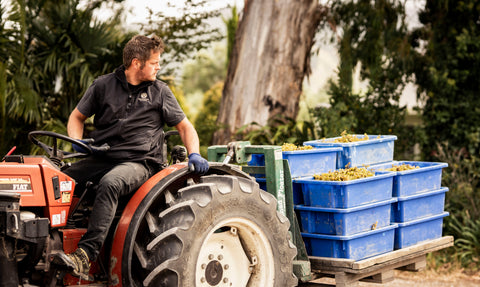
The next step is removing the grape berries from the stems - called Destemming. We destem most of our grapes looking for purity, elegance and typicity of flavour of each grape variety. Part of the destemmed berries are crushed the other left as whole berries. We do sometimes whole bunch pressing for part of our white wines, like Chardonnay.
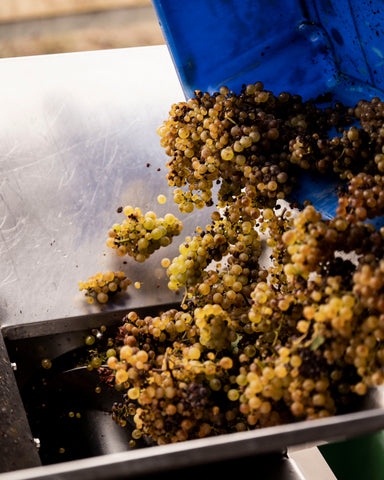
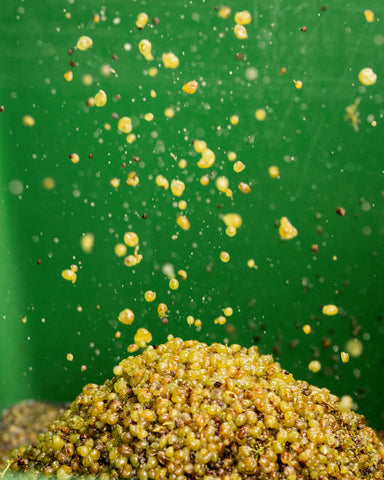
The skins are a valuable part of the grapes, if they are healthy and pure like ours. It allows us the art of cold soaking, also called "pre-fermentation cold maceration" encourage a slow, soft extraction of fruit, colour, softer tannin and flavour aiding to the richness and longevity of our wines. To avoid the must starting naturally with fermentation, it is kept cool and protected with dry ice (avoiding the use of sulphur) depending on grape variety for the duration of one to five days.

Once Hans felt that there is enough of this soft form of extraction, the temperature is allowed to rise for the wild alcoholic fermentation to start. For this to happen seamlessly and naturally, again it needs healthy grapes and a balanced ecosystem in the vineyard (spraying more potassium than sulphur helps too) and a clean winery environment for naturally occurring strong and clean yeast strains. (That’s where your ‘ambient’, often also called ‘wild or indigenous yeast’ is coming from, opposite from inoculated cultured yeasts).
Red varieties are usually fermented with a slow, cool (<28C°), three-week fermentation in temperature controlled stainless steel tanks or open fermenters with twice pumping over in peak time and than gradually less. They were also given ample time for a post-fermentation macerations extracting different flavours from the now fermented alcoholic must.
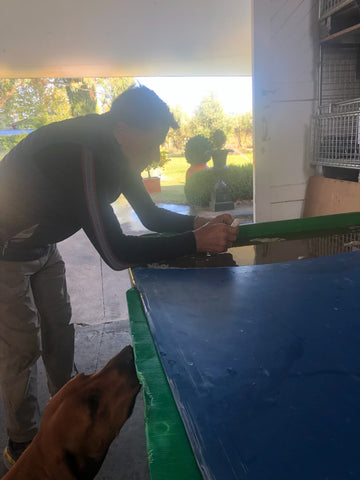
Whites are gently pressed and usually fermented for four weeks at less than 18C° directly in 500 litre French oak puncheons.
Pressing is done manually, with a gentle old bag press. We pray every vintage for the oldie to last another year… It is quite a bit of muscle work to empty the must into the press.
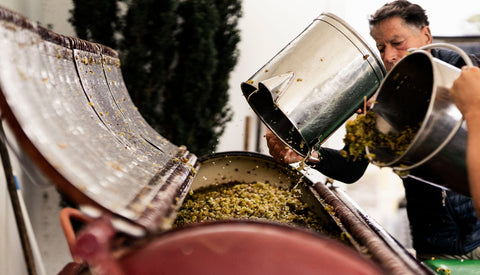
Stomping down the whole bunches of a part of our Chardonnay.
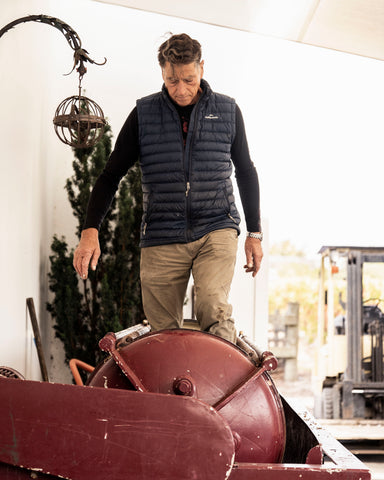
During the whole winemaking process, the must or wine is always protected from oxidation with dry ice only.
.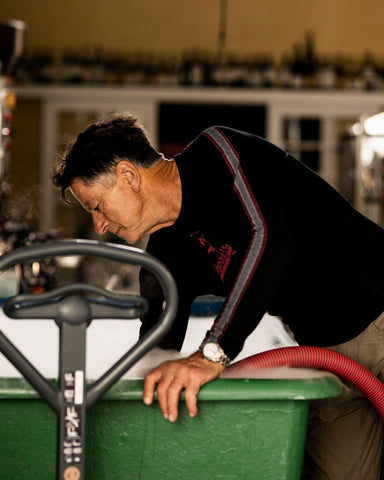
Hans can smile, all wines went smoothly through fermentation with no residual sugar left as the strong yeast strains were at work, with fresh acidity and beautiful intense flavours.
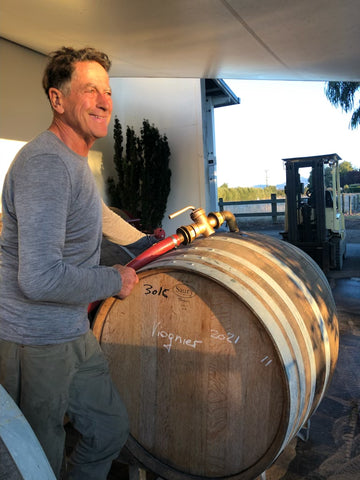
It is the skills from life-long experience that makes Hans decide how to nurture each grape variety into a graceful wine, each season, naturally.
